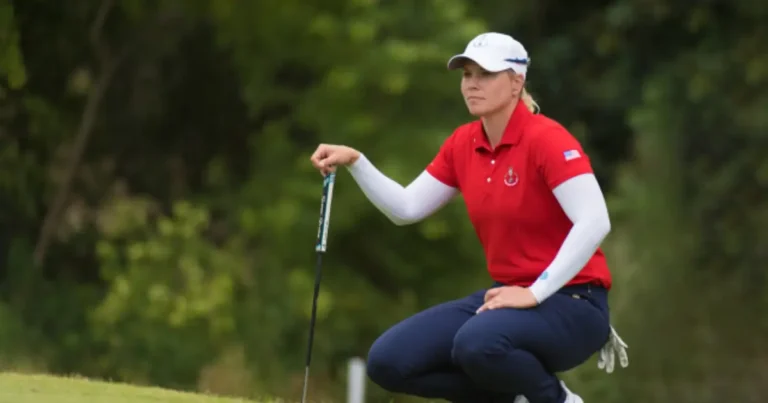What is the Average Golf Swing Speed By Age?
Golf is a popular sport played by people of all ages. One important factor in the game of golf is swing speed, which measures the velocity of your golf club as you strike the ball. Swing speed has a significant influence on your driving distance. As golfers age, changes in flexibility, strength, and other physical characteristics impact their average swing speed. This article will explore how the average golf swing speed varies across different age groups.
Golf swing speed is an important metric golfers use to track their gameplay performance. Faster swing speeds generally allow players to achieve longer driving distances, an essential part of scoring well. However, as both recreational and professional golfers age, their bodies naturally lose some flexibility, strength, and speed capacity. By understanding how average golf swing speeds decline across age brackets, players can set reasonable expectations to continue enjoying the game throughout their lifespan.
Teen Golfers (13-17 years old)
Teenage golfers are still developing their bodies and athletic capacities. At these young ages, strength training and flexibility exercises can profoundly impact their golf swing speeds. The average golf swing speed for male amateur teen golfers ranges from 84-94 mph. For female amateurs in their early-to-mid teens, average golf swing speeds fall between 62-76 mph. Junior golf programs help young players improve their strength and technique to post consistently faster swing speeds that translate into longer drives.
Young Adult Golfers (18-29 years old)
Golfers in their late teens and twenties are typically at or near the peak of their athletic prime years. The average golf swing speed for males in this age bracket ranges from 93-108 mph, with some able to reach over 110 mph. LPGA Tour professionals in this age category have an average golf swing speed exceeding 90 mph. Amateur female golfers between 20-29 years old often fall in the range of 63-87 mph. With disciplined training and practice, young adult golfers can achieve their fastest swing speeds.
Middle-Aged Adult Golfers (30-55 years old)
As golfers progress through their 30s, 40s and early 50s, they begin experiencing gradual declines in athleticism. Their bodies start losing muscle mass and flexibility, making it harder to rotate as forcefully through the ball strike. Male amateur golfers in the 30-49 age range average between 88-102 mph golf swing speeds, declining to 80-95 mph in their early-to-mid 50s. Middle-aged female amateur golf swing speeds range from 59-75 mph. Regular strength training, cardio, and swing drills help midlife golfers maintain respectable speed.
Senior Golfers (55+ years old)
Over 55 years old, age-related physical changes often lead to notable decreases in golf swing speeds. However, some still find ways to deliver powerful strikes. Healthy, athletic senior males in their late 50s through 60s can average between 75-90 mph swing speeds. Senior female amateurs typically fall between 50-68 mph. Highly competitive senior professional golfers on PGA and LPGA tours continue posting averages over 80 mph into their 60s. Conditioning programs emphasizing flexibility allow older golfers to make graceful, balanced swings within their body’s capabilities.
How Swing Speed Changes Impact Scoring
The downward progression of golf swing speeds through the aging process directly impacts overall scoring capabilities. Longer hitters have an advantage reaching greens in fewer strokes on lengthy par 4s and 5s. Increased distance also allows more lofted, accurate irons and wedges into greens. Senior golfers offset some power loss through course management and strategically playing to distances comfortable for their current speed levels. Understanding golf swing speed benchmarks by age group helps inform realistic practice goals for continuous improvement.
Additional Factors Influencing Swing Speed
While age significantly influences average golf swing speed, other factors also determine an individual’s velocity. Body composition, including muscle mass and fat percentage, greatly affects power generation. Flexibility through the twisting torso and shoulders also enables forceful coiling on the backswing and rapid uncoiling into contact. Swing mechanics and release timing also influence clubhead speed. Optimizing these areas alongside age-appropriate conditioning counteracts declining speed related to aging.
FAQs
What is the typical golf swing speed for beginners?
The average golf swing speed for beginners is 60 to 70 miles per hour.
What is the average golf swing speed among male golfers in their thirties?
Male golfers in their thirties typically have an average swing speed of 93 to 103 miles per hour.
How does the average golf swing speed vary with age?
Golfers’ swing speeds may gradually decline as they age. For example, golfers in their forties may have an average speed of 88 to 98 miles per hour.
What factors influence an individual’s golf swing speed?
Physical fitness, flexibility, and overall health can all affect a golfer’s swing speed. Additionally, the type of golf club used and proper technique are important considerations.
Is there a noticeable difference in average golf swing speed between genders?
Yes, on average, male golfers have faster swing speeds than females. Individual variations do exist, though, depending on skill level and physical conditioning.
Conclusion
Golfers want to enjoy playing their best through every stage of life. Monitoring average golf swing speeds for one’s age bracket provides helpful context on athletic capabilities. Teenagers and young adults in their physical prime can reach high velocities like 90+ mph. Golfers over 50 years old measure declining swing speeds but remain competitive with reasonable practice expectations and strategic course management.
Conditioning the body through strength training, cardiovascular exercise and flexibility workouts helps mitigate the effects of aging for faster clubhead speed. Players who monitor key benchmarks can tailor their training appropriately. With healthy expectations and disciplined, focused work, golfers can maintain sweet-swinging motions delivering consistent speed for years to come.







